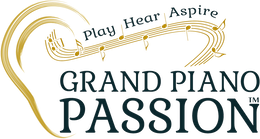Musings on Brahms Intermezzo B-flat Minor from Rabbi David Posner, Amateur Pianist
Last year, in the fall, I did a memorial service for a member of the congregation at Temple Emanu-El. The nicest guy, married with children, a doctor at NYU, ah, he was sweet! The family asked me, “Would you play something on the piano before you officiate?” I remembered that I had done the same thing for the deceased’s mother-in-law years before.
I said, “Sure, absolutely.” So I walked into the Temple, played the Brahms Intermezzo in B-flat Minor, got up from the piano, went to the podium, and officiated as Rabbi. Of course, I didn’t choose a piece that was going to make my hands run all over the place. The Intermezzo is slow, Romantic music. It felt very natural to make the switch from playing to speaking.
Great music is not just beautiful, but it is true. Brahms is true, Beethoven is true. For the religious person, there is a miracle and mystery of revelation. When I play, I go from the level of aesthetics to revelation.
Insight on Brahms Intermezzo B-flat Minor from Seth Horvitz, MFA Student
The opening of Brahms’s Intermezzo in B-flat Minor (Opus 117, No. 2) is astonishing. The piece is off and running from the start, suggesting multiple tonal regions. Brahms displays his mastery of ambiguity, that makes us feel as if we are being led in different directions simultaneously, overlappingly. The twists and turns in the harmony rarely give the listener any sense of solid ground. Glenn Gould said he liked the Brahms Intermezzi for their “atmosphere of improvisation.” Perhaps the most highly developed improvisations achieve a kind of multi-layered integration that “composed” music can never quite reach.
 look inside |
3 Intermezzi – Op. 117 By Johannes Brahms (1833-1897). Edited by Monica Steegmann. For Piano. Piano (Harpsichord), 2-hands. Henle Music Folios. Urtext edition-paper bound. Classical Period. SMP Level 10 (Advanced). Collection. 15 pages. G. Henle #HN121. Published by G. Henle (HL.51480121)  (2) …more info |

tnx
that was entertaining and informative
Glad you enjoyed it!
I love the Brahms Intermezzo op 117 no 2. The article was first class and an amazing analysis and underlines much of what I had guessed at about the ambiguous and striking harmony I experience when performing the piece. The one thing I think the analysis failed to coommunicate was that this piece is really emotional and primarily the harmony appears to be the agent used to achieve the this. My reading of Brahms is that I doubt he thought much about the relative positions of the chords and the sort of analysis presented but poured out his emotion choosing harmony melodic form in keeping.
Beautifully said. Thank you for sharing your perspective. I feel that many artists work primarily from a place of emotion (although with a base of theory) that we later deconstruct.